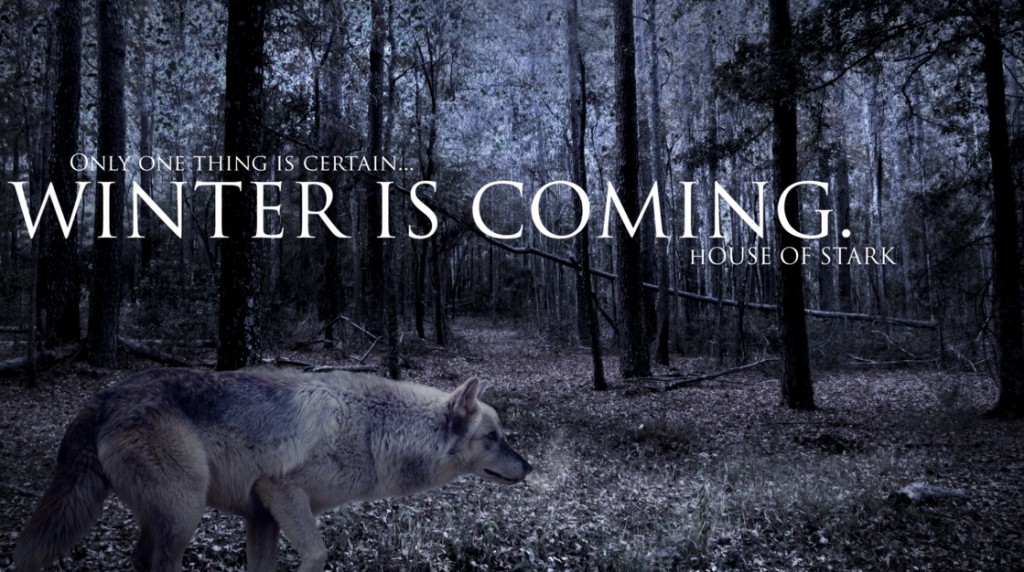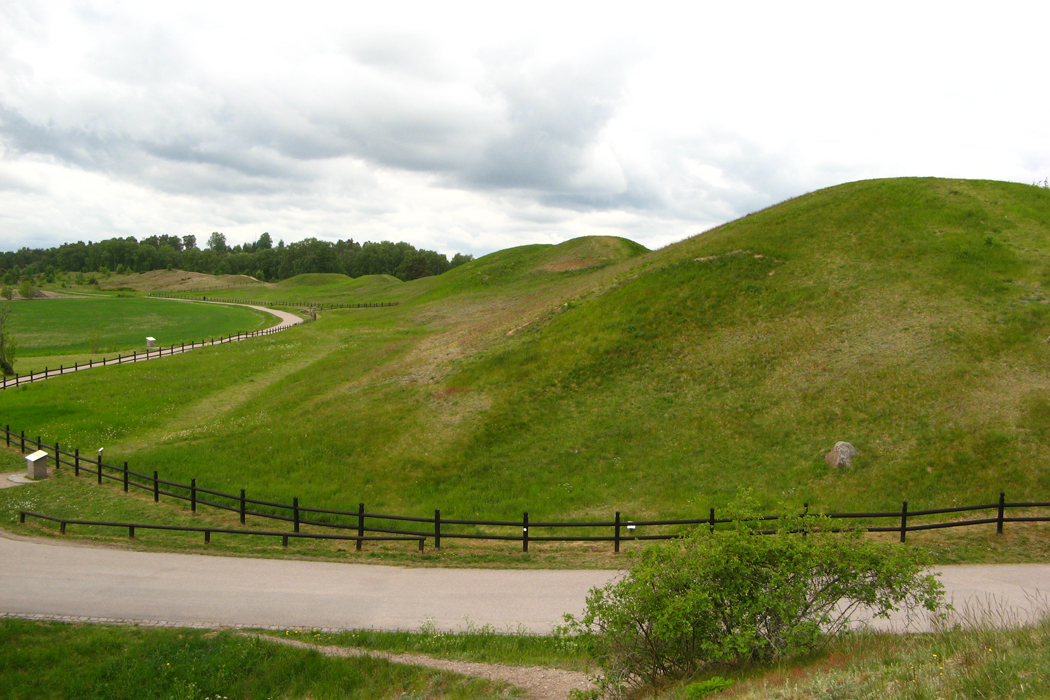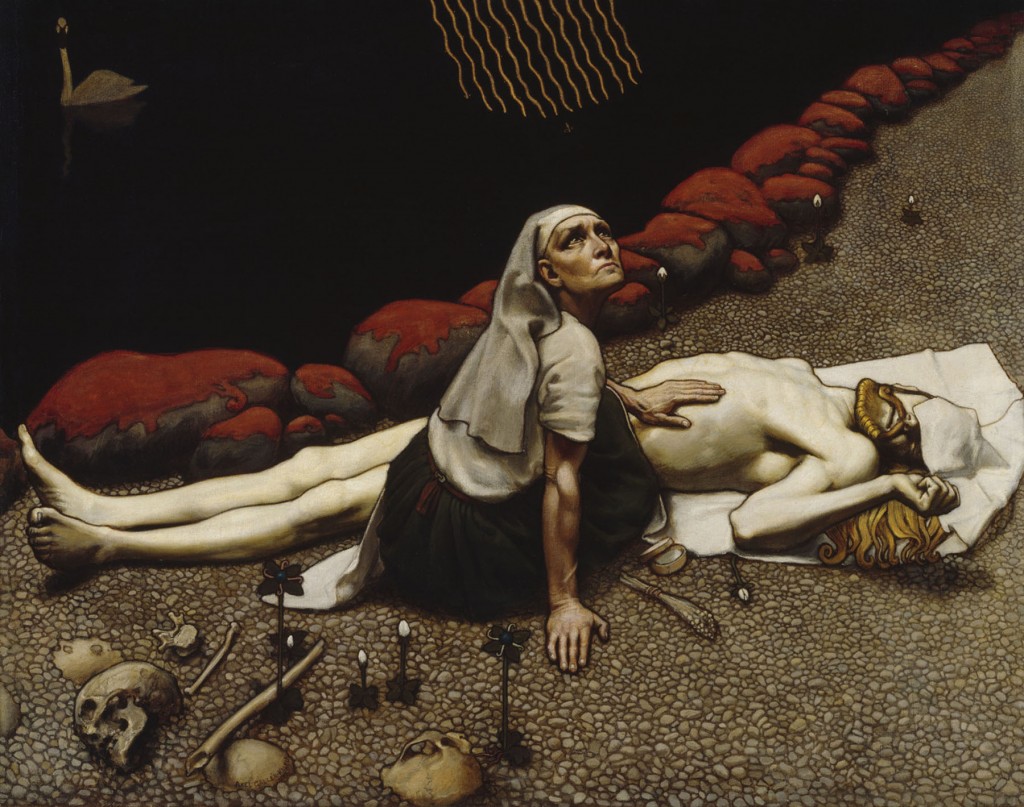The sun turns black, earth sinks in the sea. Down from heaven, stars are whirled…

Thus sang the Seeress (the Völva) to Odin about the end of the old world in the Old Norse poem, Voluspá. [1] Of course, it is incessantly debated precisely when the poem was (first) composed and how it was performed in the Old Norse Society. But whatever the answers to these questions are, there is no doubt that the poetic rendering of the cataclysmic event, which introduces the listener to the coming story of the apocalypse (Ragnarök) does uncannily remind us of the happenings in AD 536, when “it came about during this year that a most dreaded portent took place. For the sun gave forth its light like the moon without brightness during this whole year, and it seemed exceedingly like the sun in the eclipse, for the beams it shed were not clear nor such as it is accustomed to shed. And from the time when this thing happened, men were neither free from war nor pestilence nor any other thing leading to death (AD 536/37).
A cataclysmic event
It is a well-known fact that medieval chroniclers excelled in listing ominous portents and describing calamitous weather conditions. Theirs was a world on the constant brink of catastrophes. Nevertheless, the events, which took place in AD 536 – 550 (give and take a few years), were remarkable given the contemporary characterization, which was voiced in a series of chronicles and letters from the 6th century. It is not so much the fact that the sun dimmed. Nor that snow was severe and birds perished, or the ocean was tumultuous with spray. Rather, the remarkable feature was the prolonged character of these events. Of course, the time horizons given by the different chroniclers were never the same. Nor do the different writers seem to have experienced it the precise same way. However, the general feeling was that the events lasted more than a year. Also, we know now from scientific studies (dendrochronology and archaeology) that the events in 536 were nothing less than inaugurating a decade-long cold snap followed by reforestation, widespread hunger and plague – the so-called ‘migration period crisis’. Primarily, this has been studied in a Northern European context by archaeologists.
Dendrochronology and archaeology

Tree-rings or dendrochronology presented the first hard scientific witness to this. From Siberia in the East to Western America fossil tree-rings have shown that average summer-temperature dropped by 3 – 4 degrees between 536 –to 545 (550). However, these studies have also shown that there probably were two dips – one in 536 and a second post 540. Although it cannot be precisely dated, paleobotanical evidence supports these findings, by demonstrating how reforestation took place on an unprecedented scale in the 6th century. It has been estimated that it took between five and eight generations to regain the former level of cultivation.
Archaeologists have complemented these findings with surveys of settlements in Sweden in the 6th century. In 2007 Hans Göthberg could demonstrate how the total number of occupied sites in Uppland fell by 75% (Twilight of the Gods p. 432). It is estimated from these and other surveys that the populations of Scandinavia were more or less halved. To what extent this massive crisis was the direct result of the deteriorating climate or more indirectly a result of the Justinian plague is probably no longer possible to decide.
Complex explanations
For a long time, scientists have been puzzled by all this. On the one hand, a precisely datable climatic catastrophe obviously took place. On the other hand, the exact nature was for a long time eluding the scientists, as studies of the ice cores from the Arctic and Antarctica did not yield any information about what took place. Was it volcanic forcing? Or was it an intergalactic encounter with a comet or asteroid? New research shows that both events may have occurred in the decade in question. Already in 2008, renewed analysis of the ice cores showed a heightened level of sulphur signals. However, as these were found both in the Arctic and Antarctic ice cores, it is believed that the volcanic eruption took place in the tropics. Careful dating of the outbreak in El Salvador of the Llopango Volcano has shown that a massive eruption occurred in 535/36, estimated to have yielded 84 cubic kilometres of ash. Generally, though, volcanologists agree that ash clouds from volcanoes disappear rather more quickly. Therefore, it seems impossible that the devastating weather phenomena of three winters and two summers around 535 plus the following period of lower temperature can all be caused by this eruption.
Enter another team of researchers, who have analysed the ice cores and made yet another find: a high concentration of metallic spherules consisting of nickel and tin. Both metals are abundant in extra-terrestrial debris and are unlikely to reflect contamination from harvesting the ice cores. Another remarkable find in the ice cores are fossils of ancient marine microorganisms. How did these end up in the middle of the polar ice shields? The scientists believe they are the result of a collision of earth with some major fragments from Halley’s Comet. Around the same time as the eruption in El Salvador took place, they may have slammed into the Gulf of Australia – or, as has recently been claimed: the North Sea near Norway – and made a gargantuan splash of water, rocks and dust, which was sent orbiting in the stratosphere. A third option is an undersea volcanic eruption accompanying the volcanic forcing of the eruptions detected in AD536 and 540.
The consequences

Archaeologists have long been convinced that the events in 535 did have devastating effects. First of all, it has been argued that the mighty winter was later echoed in the myths conserved in the Norse literature from the beginning of the second millennium (the stories of the Fimbul winter ending in Ragnarök). Recently it has been argued that major cosmological changes can be dated precisely to this period, primarily the abandonment of the old sun cult and the introduction of a new cult focusing on Odin. The third type of event was the enormous amounts of gold sacrificed at the beginning of the 6th century, believed to be offered to placate the old Gods. Afterwards, the economy was based on silver. In a Christian context, it has recently been argued that the great ‘dust veil’ inspired the 6th-century Christian cleric, Gildas, to write his history, De Excidio et Conquestu Britanniae. Recounting the late-Roman history of Britain, this is the only substantial source for the history of this period written by a near-contemporary individual living in Northern Europe. A third hypothesis is that the images of Grendel in Beowulf, as well as The Celtic Myths, have roots in the sightings of the Hailey Comet in the mid 530s.
To what extent other changes in the 6th century can be more or less directly derived from the cataclysmic events of 535 and later is somewhat less obvious. However, the social elite seems to have emerged strengthened from the crisis, building new power centres, introducing a new burial tradition (tumuli), creating a new form of central meeting places (mead-halls), and a new aesthetic (the animal style). All this was buttressed through the creation of new ideas about “royal” descent and “sacred” lineages (the hall farm families) as well as a whole new form of religion (Odin-cult). Yet another part of this seems to have been an intensification of animal husbandry and a changed diet. It is probably totally uncalled to claim that these complex socio-cultural, economic and cosmological shifts were univocally caused by the catastrophic events in 536 – 550. However, it seems reasonable to at least acknowledge that these new ways of life and worldviews were snowballed into existence by the catastrophes. (Just as dramatic changes of the same order were invoked by the plague in the 14th and 15th centuries). From where did the inspiration for the new life-style come? Perhaps the Huns! But that is quite another story.
NOTES
[1]The stanza (No 55) in Old Norse (which sounds much better): Sol ter sortna sigr fold imar hv erfa af hi mni heiðar stiornor From: Völuspá: The prophecy of the Seeress, verse 55 [2] From: Procopius of Caesarea: History of the wars 4.14.5-6. In: Procopius. Transl. by H. B. Dewing. London 1914 – 40.
FEATURED PHOTO:
Akseli Gallen Kallela: Lemminkainens Mother 1897. Inspired by the Finnish Poem: Kalevala, which perhaps also contains reminiscences of the events in AD 536. Source: Wikipedia/Open Domain
READ MORE (a selection)
The contemporary sources:
The Mystery Cloud of 536 CE in the Meditterranean Sources. By Antti Arjava In: Dumbarton Oaks Papers 2005, Vol 59 pp. 73 -94
New research about the linkage between climate and socio-cultural change:
Climate and Causation in the Swedish Iron Age. By: Mats Widgren In: Geografisk Tidsskrift – Danish Journal of Geography. 2012 Vol. 2, pp. 126 – 134
Some Perspectives on Societal Impacts of Past Climatic Changes. By Henry Diaz and Valerie Trouet In: History Compass 2014, Vol. 12, No.2 pp. 160 – 177
An Iron-Age Schock Doctrine – Did the AD 536–7 event trigger large-scale social changes in the Mälaren Valley Area? By Daniel Löwenborg In: Journal of Archaeology and Ancient History 2012, No. 4: pp. 3 – 29
New research into the causes of the events AD 536
The Year of Darkness. By: Collin Barras In: New Scientist, 02624079, 1/18/2014, Vol. 221, Issue 2952 (with links to further literature)
Why Halley’s Comet May Be Linked to Famine 1,500 Years Ago By Mike Wall In: Live Science 18.12. 2013.
Did a conflagration of Comets contribute Dust to the Earth and cause Climate Downturns between 532 and 542 A.D.? Slides from a presentation given by Dallas Abbott 2013
Changes in Cosmology
Tracing Old Norse Cosmology. The World tree, middle earth and the sun from archaeological perspective. By Anders Andrén. Series: Vägar till Midgård vol 16. Nordic Academic Press 2014
Twilight of the Gods? The ‘dust veil event’ of AD 536 in critical perspective. By Bo Gräslund and Neil Price In: Antiquity 2012 Vol 86: 428 -443
Fimbulvintern, Raganarök och klimatkrisen år 536-537 e. Kr. By Bo Gräslund In: Saga och sed : Kungl. Gustav Adolfs akademiens årsbok 2007, pp 93 – 123
Gildas and the Mystery Cloud of 536–7 By David Woods In: Journal of Theological Studies, 2010 Vol. 61, pp. 226 – 234
The Celtic Gods: Comets in Irish Mythology By Patrick McCafferty and Mike Baillie Tempus 2005 ISBN-10: 0752434446 ISBN-13: 978-0752434445
The Gold Hoards
The Year 536 and the Scandinavian Gold Hoards By Morten Axboe In: Medieval Archaeology 1999, Vol. XLIII, pp. 186 – 188 Amulet Pendants and a Darkened Sun By Morten Axboe In: KVHAA Konferenser 2001, Vol. 51 pp. 119 – 136
The changes in Landscape and Socio-Cultural Organisation
Iron Age Myth and Materiality. An archaeology of Scandinavia AD 400-1000. By Lotte Hedeager Routledge 2011 ISBN 978-0-415-60602-8
The Early Iron Age in South Scandinavia: Social Order in Settlement and Landscape By Frands Herschend Series: OPIA 46 Department of Archaeology and Ancient History, Uppsala University 2009




